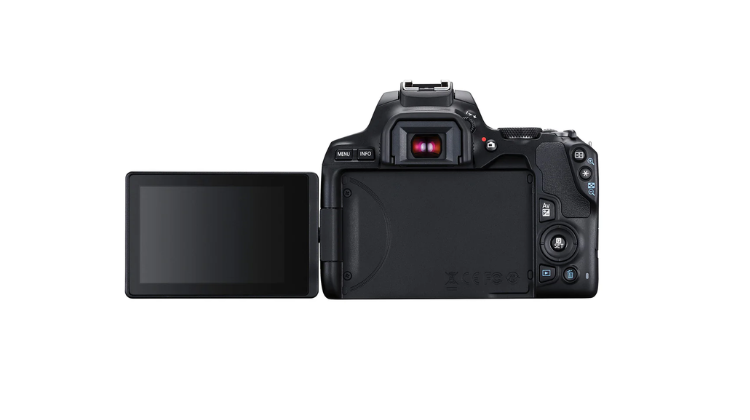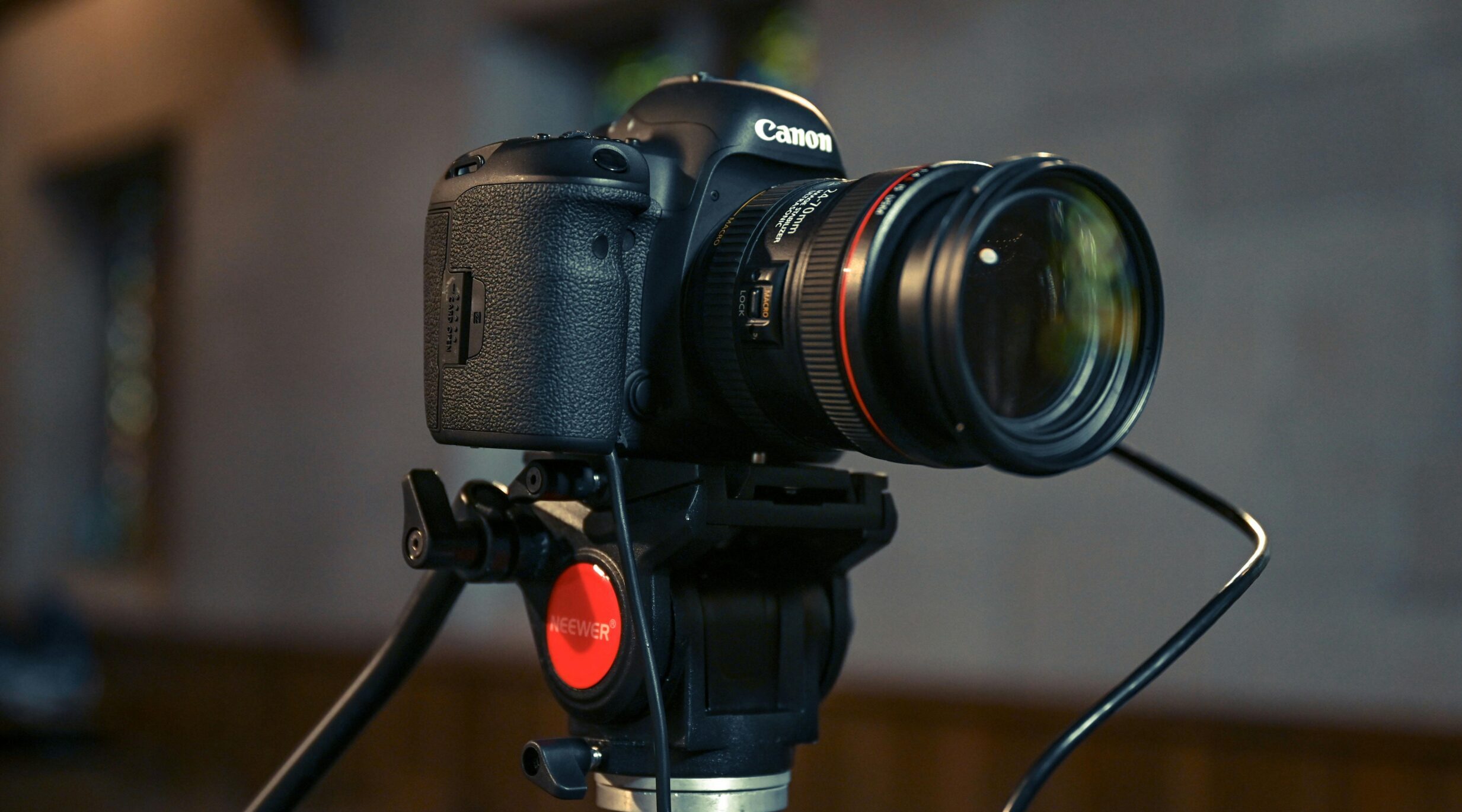No matter how much experience you have or how much money you want to spend, there’s a DSLR camera that can meet your video needs. But which one is best for you? I can help with that. I began my photography journey with a Canon EOS 6D and have used almost every DSLR since, so I know which ones are still good today. Best Dslr Camera for Professional Photography and Videography
Even though mirrorless cameras are getting a lot of attention, DSLRs are still a great option because they work with many lenses, are built to last, and offer good value. New DSLR models are not released often, but older ones usually have lower prices and still get updates to keep them up to date.
This guide will show you the best DSLRs for video at different levels. The Canon EOS 250D is a good choice for beginners, while the Nikon D780 and Canon EOS 90D are great for hobbyists. If you want the best features, the Canon EOS-1D X Mark III offers 5.5K resolution and is the top choice. No matter what you want to create, there’s a DSLR that can help you do it.
1. Canon Rebel EOS SL3 / EOS 250D

You will most likely have a limited budget if you are just beginning to create video content. Because of this, the Canon EOS 250D is a great choice for novices. You get a pretty affordable model with a respectable level of video features.Although 4K video is available, your field of vision is reduced due to its rather large crop (on top of the already cropped sensor). You have sufficient flexibility to film vlogs at Full HD speeds of up to 60 frames per second. If you’re used to uncropped footage, you’ll need to recompose your shots, but I did quickly get used to this when I tried the camera.
SPECIFICATIONS
- Sensor: APS-C
- Megapixels: 24.1
- Max video resolution: 4K (inc. 1.7x crop)
- Frame rates: 24, 25fps (4K), 60, 50, 30fps (Full HD)
- Lens mount: EF/EF-S
- Screen: 3-inch 1040k-dot vari-angle touchscreen
- Autofocus: Dual Pixel CMOS AF
- User level: Beginner
2. Nikon D7500
The Nikon D7500 may be an older DSLR model, yet it remains a versatile option, particularly suitable for those who capture both still images and videos – or for photographers beginning to explore content creation. Its APS-C-sized sensor, when utilizing the 4K crop, performs optimally at Full HD resolution, allowing for a maximum frame rate of 60fps. This model was significant as it was the first instance where Nikon offered 4K video capabilities in a non-professional DSLR. According to our reviewer, the outcomes were somewhat inconsistent, highlighting that the camera lacks on-sensor phase detection autofocus. When operating in live view mode for 4K video, it depends on the slower contrast-detect autofocus. Nevertheless, they found the contrast-detect AF in Live View mode to be reasonably effective, which is primarily what video shooters will be using anyway.
SPECIFICATIONS
- Sensor: APS-C
- Megapixels: 20.9
- Max video resolution: 4K (inc. 1.5x crop)
- Frame rates: 30, 25, 24fps (4K), 60, 50, 30, 25, 24p (Full HD)
- Lens mount: F
- Screen: 3.2-inch 922k-dot tilting touchscreen
- Autofocus: Contrast-detect AF Live View
- User level: Beginner / Intermediate
3. Canon EOS 90D
The Canon EOS 90D offers numerous advantages for those seeking a video-focused DSLR. It successfully merges mirrorless video capabilities and live view autofocus with the traditional handling of a DSLR. Despite featuring an APS-C sensor, it provides uncropped 4K video along with various frame rates, reaching up to 120fps in full HD for stunning slow-motion shots. However, there were aspects of the EOS 90D that I found disappointing; particularly the single memory card slot (SD / SDHC / SDXC) and its average buffer capacity. Nevertheless, I discovered that the camera performs exceptionally well for its price point aimed at enthusiasts. Let us begin with its handling. The fully articulating touchscreen is perfect for capturing a variety of angles, including presentations to the camera, while the Dual Pixel CMOS autofocus delivers commendable results when recording video.
SPECIFICATIONS
- Sensor: APS-C
- Megapixels: 32.5
- Max video resolution: 4K
- Frame rates: 30, 25fps (4K), 120, 100, 60, 50, 30, 25fps (Full HD)
- Lens mount: EF/EF-S
- Screen: 3-inch 1040k-dot vari-angle touchscreen
- Autofocus: Dual Pixel CMOS AF
- User level: Intermediate
4. Nikon D850
The Nikon D850 has maintained its status as the leading DSLR for several years, thanks to its combination of a high-resolution sensor, superb handling, and an array of features. Upon its release, I recall it being circulated in the office with a sense of respect and admiration. While it is true that some of its specifications may have been overshadowed by mirrorless alternatives – such as the Nikon Z9, which offers a groundbreaking 8K 60p maximum recording capability – if you are dedicated to both video and photography, it can still be considered a dominant player in the market. For those focused on video, the D850 provides uncropped 4K recording along with a wide variety of frame rates in both 4K and Full HD formats. Unlike many advanced full-frame DSLRs, the screen is capable of tilting. Although this feature may not be particularly useful for vlogging and social media content, it proves to be quite beneficial for capturing footage from challenging angles.
SPECIFICATIONS
- Sensor: Full-frame
- Megapixels: 45.7
- Max video resolution: 4K
- Frame rates: 30, 25, 24fps (4K), 60, 50, 30, 25, 24fps (Full HD), 30p x 4, 25p x 4, 24p x5 (Slow Mo)
- Lens mount: F
- Screen: 3.2-inch 2359k-dot tilting touchscreen
- Autofocus: Contrast-detect
- User level: Advanced
5. Canon EOS 5D Mark IV
SPECIFICATIONS
- Sensor: Full-frame
- Megapixels: 30.4
- Max video resolution: 4K (inc. 1.74x crop)
- Frame rates: 30, 25, 24fps (4K), 60, 50, 30, 25,24fps (Full HD), 120, 100fps (HD)
- Lens mount: EF
- Screen: 3.2-inch 1620k-dot fixed touchscreen
- Autofocus: Dual Pixel CMOS AF
- User level: Expert
When selecting the best DSLR camera for both video and photography, the Canon EOS 90D consistently stands out as a versatile and high-performing option. Combining a 32.5MP APS-C CMOS sensor with 4K video recording capabilities (without crop), it strikes an excellent balance for content creators who demand sharp still images and high-resolution video. Its fast Dual Pixel autofocus system ensures smooth subject tracking in both photo and video modes, while the fully articulating touchscreen offers flexibility for vlogging or dynamic shooting angles. Whether you’re a professional or an enthusiastic creator, the EOS 90D offers a well-rounded feature set that caters to both visual storytelling and high-quality photography
DSLR cameras can be an excellent choice for videography, particularly for creators who value high image quality, interchangeable lenses, and manual control. Many modern DSLRs, such as the Canon EOS 90D and Nikon D780, offer impressive video capabilities, including 4K resolution, advanced autofocus systems, and robust low-light performance. Their larger sensors provide
a shallow depth of field and cinematic image quality that’s often preferred in professional and creative video work. While mirrorless cameras have gained popularity for their compact size and additional video features, DSLRs remain a reliable and powerful tool for videographers who prioritize versatility, durability, and image excellence.

